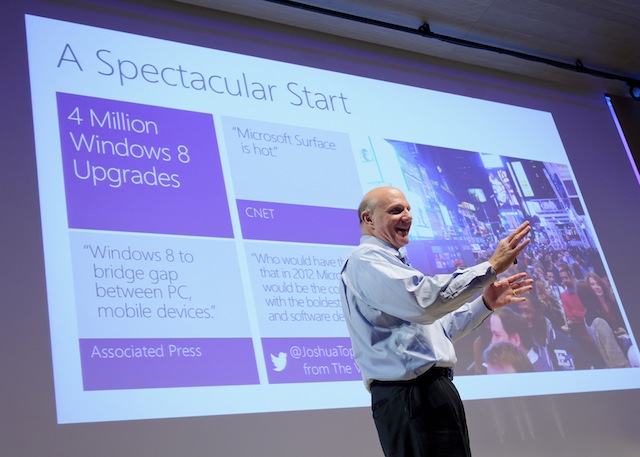It’s hard not to be impressed by the calibre of guests CNBC’s Squawk Box when they’re able to get Warren Buffett and Bill Gates on together for an interview.
During the interview Bill Gates made an interesting assertion about Apple’s iPad, ““A lot of those users are frustrated, they can’t type, they can’t create documents, they don’t have Office there.”
Bill’s undoubtedly right, some iPad users are frustrated by the device’s limitations. However for every irritated iPad user there are a dozen baffled by the lack of a Start button on Windows 8.
The reality distortion field though is strong, “Windows 8 really is revolutionary,” says Bill. “It takes the benefits of the tablet and the benefits of the PC and it’s able to support both of those.”
The Microsoft founder is enthusiastic about the company’s Windows tablet, “you have the portability of the tablet but the richness, in terms of the keyboard and Microsoft Office, of the PC.”
It’s notable Gates mentioned Microsoft Office, particularly given the question was about the cloud. It’s clear one of Microsoft’s priorities is to maintain their strength with productivity applications and move with their customers onto the cloud.
The problem though for Microsoft is that Apple’s iOS and Google’s Android are dominating the cloud focused operating systems, leaving Windows behind.
Making matters worse for Microsoft is it’s clear Windows 8 tablets are never going to catch their competitors. Consulting group Gartner last year predicted the global market for tablet computers will double over the next three years, but Microsoft will capture barely 10% of the sales.
|
OS |
2011 |
2012 |
2013 |
2016 |
|
39,998 |
72,988 |
99,553 |
169,652 |
|
|
Android |
17,292 |
37,878 |
61,684 |
137,657 |
|
Microsoft |
0 |
4,863 |
14,547 |
43,648 |
|
QNX |
807 |
2,643 |
6,036 |
17,836 |
|
Other Operating Systems |
1,919 |
510 |
637 |
464 |
|
Total Market |
60,017 |
118,883 |
182,457 |
369,258 |
Sitting in a reality distortion field is fine when things are going well and you dominate your world, but Microsoft – despite still being insanely profitable – no longer dominates the markets that made it into one of the world’s leading companies.
The challenge for Bill Gates and Microsoft’s management is adapting to those changes, projecting your own frustrations onto the users of a competitor’s product, isn’t a recipe for success.


